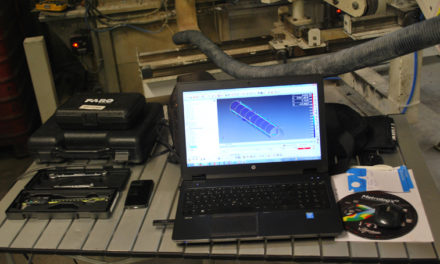
Redundant control system for traction power monitoring to Matterhorn Gotthard Bahn
Switzerland. The Matterhorn Gotthard Bahn (MGBahn) railway carries over eight million passengers a year, making it one of Switzerland’s largest transit companies. The 144 km long rail network climbs a total altitude difference of more than 2,000 meters. To ensure efficient operation of the network, MGBahn has replaced the existing control system used for the traction power supply complete with network infrastructure, and opted to use a modern Ruggedcom solution from Siemens instead.
The redundant system ensures reliable operation even in the event of a failure, enables convenient remote maintenance and provides simple traction power supply control and monitoring over the entire rail network.
The MGBahn runs from the Canton of Graubünden up to Zermatt below the Matterhorn. As the previous network structure used to be relatively complex and fault-prone, the operators took the decision to modernize the entire system.
MG Bahn Project Manager Jean- Pierre Waldmann describes the challenges: “Efficient management of the rail network requires know-how and the right solutions. We want to know what is happening on the line at all times. That applies equally to tracking trains on their routes, to fast location and elimination of faults along the line and to the requirement-based traction power supply.” The project team opted to use components from the Siemens Ruggedcom portfolio.
Multiservice network component for flexible expansion
 The solution is based on the Ruggedcom RX1500 Layer 3 switch. The smart multi-service network component combines the functions of switch, router and firewall with WAN connectivity. The device provides a high level of reliability due to the use of hotswappable media modules and power supplies. Hot swap capability describes the facility for exchanging during running operation without the need to interrupt the power supply or restart the system. The primary additional benefit for the user is flexible expansion with the media modules. Other benefits of the RX1500 include its robust design, its immunity to electromagnetic interference, shock and vibration resistance and its extended temperature range.
The solution is based on the Ruggedcom RX1500 Layer 3 switch. The smart multi-service network component combines the functions of switch, router and firewall with WAN connectivity. The device provides a high level of reliability due to the use of hotswappable media modules and power supplies. Hot swap capability describes the facility for exchanging during running operation without the need to interrupt the power supply or restart the system. The primary additional benefit for the user is flexible expansion with the media modules. Other benefits of the RX1500 include its robust design, its immunity to electromagnetic interference, shock and vibration resistance and its extended temperature range.
Secured availability
The network of the control system can be divided into several virtual LANs (VLANs). Incorporated into the RX1500 is also the Virtual Router Redundancy Protocol (VRRP) function, which ensures the availability of the network. The two RX1500 switches were installed in two separate locations (Brig and Glisergrund) and virtually merged to become a single virtual router. The locations are redundantly linked by a glass fiber connection which ensures that one of the RX1500 switches takes over the gateway function immediately should the other one fail. The control center monitors a total of 44 stations collated into groups of seven, each of which forms a VLAN. If a fault occurs in one line segment, it can be disconnected without impacting on the remaining network operation. Faults can often be diagnosed and fixed using remote maintenance over the internet without the need for a site visit.
Smooth startup using simulation and redundancy
To ensure trouble-free commissioning, the hardware and software supplied by Siemens were subjected to prior testing in a simulated test environment. Only once this stage was completed did implementation begin. “Because we had built a redundant system (A + B), we were able to convert system A of the power system control center to the new IP structure first and test it. Once we had a successful result, system B was also converted,“ explains Raymond Pünterer, Siemens project manager. “Without intelligent power supply networks, it is not possible to handle the stringent requirements of automated railroad operation. Siemens showed us how existing distribution networks can be made fit for the future with the new control system. Significant advantages in maintenance and operation and substantially simpler routing are the result,”added Waldmann.






